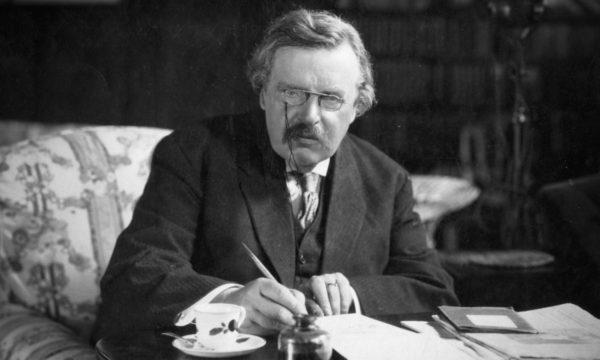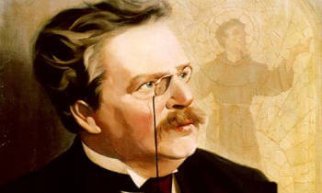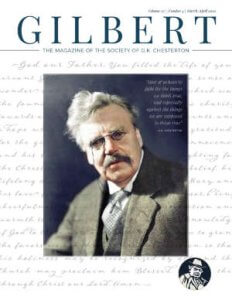Collected Works, Volume 14, Part One
A Potpourri of Tales
“Every man is a mystery.”
These are the words of Chesterton’s other priest-detective, Father Stephen. If you want to know why Father Stephen did not go on to have the same prolific sleuthing career as Father Brown, then read “The Tower of Treason.” It is one of 37 previously uncollected tales in Part One of Volume 14 of the Collected Works of G.K. Chesterton. Denis Conlon assembled this wide variety of short stories, parables, fairy tales from many different sources. Some readers may wonder whether or not a few of them even qualify as stories. They defy categories just as Chesterton himself. We might say it is a mystery what they are, but that would be a paradox, because a good mystery must be a good story, with a well-constructed plot, well-drawn characters, and a clear narrative. In any case, the most interesting stories in this collection are the mysteries. They include the three uncollected Father Brown stories (which have since been finally united with the others to form a truly complete collection), but we are also introduced to several new detectives, who, alas, make their only appearance in Chesterton’s fiction.
It is important to understand Chesterton as a poet, one who is sometimes using words as an elegant and intriguing mask to the truth, sometimes using words to tear the mask off; sometimes using words as a scenic route to the truth, sometimes as a short cut. It is significant that so many of his fictional heroes are poets—and detectives: trying to adorn the truth and trying to reveal it. Or priests: trying to elicit the truth in a confession or bestow it in a sacrament.
The priest Father Stephen is a former actor, and Chesterton describes an actor as “a bundle of masks,” and in a glorious ending, reveals the truth in his heart.
The engrossing and even enchanting novella, “The Trees of Pride” (which reads like a screenplay), features a poet named Treherne who has “the power of reaching rather intimate conversation in one silent and cat-like bound.” That is what poetry should do. Together with an art critic named Paynter, he is caught up in a bizarre and gothic-like mystery that provides several twists as they reach several wrong conclusions. At one point, Treherne himself is the suspect in a murder. Paynter doubts his guilt, but also seems tolerant of his perceived vices. “I suppose, the poet has passions like great unearthly appetites; and the world has always judged more gently of his sins. . .”
The poet responds: “I will excuse you from excusing me for all the things I haven’t done; and you, I hope, will excuse me if I differ from you altogether about the morality of poets. As you suggest, it is a
fashionable view, but I think it is a fallacy. No man has less right to be lawless than a man of imagination.”
Now there’s a twist. Imagine saying that an artist has a duty to be restrained in his actions because he can let loose in his imagination.
Chesterton puts his wild imagination on display in “A Picture of Tuesday”, which prefigures The Man Who Was Thursday. But another tale, “A Nightmare,” prefigures both The Man Who Was Thursday and The Ball and the Cross. And even Orthodoxy: “We guard ourselves with walls; we gird ourselves with sackcloth. But our laughter and our levity are within. But the new philosophers are girt all round with gaiety, and their despair is in their hearts.”
The delightful story, “The Conversion of an Anarchist” (which we have dramatized in a television episode of “The Apostle of Common Sense”) is not so much a mystery as a tale with a twist, or, as the title indicates, a conversion.
While many of the stories feature sword fights, there is one important shooting: in the brilliantly-plotted “The Man Who Shot the Fox”.
The volume contains the mystery story that Chesterton considered his favorite (“The Five of Swords”), and also the mystery story that I consider my favorite (the aforementioned “The Tower of Treason”). And in “Dr. Hyde, Detective, and the White Pillars Murders,” Chesterton apparently breaks one of the cardinal rules of the Detection Club, the fraternity of mystery writers including Ronald Knox, Agatha Christie, and Dorothy L. Sayers, who declared certain plot devices forbidden. But you decide.





